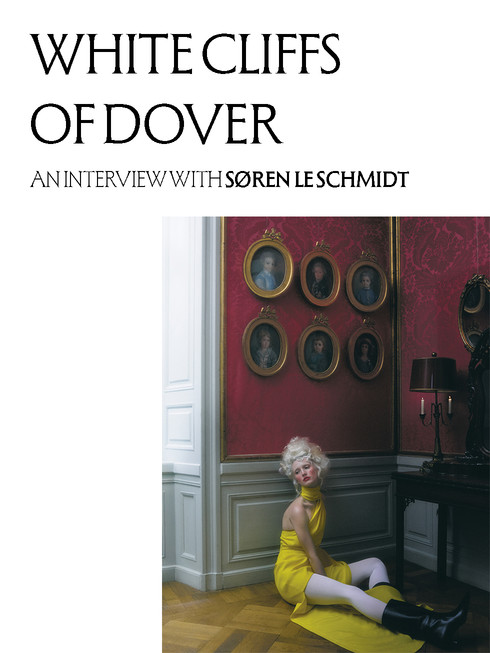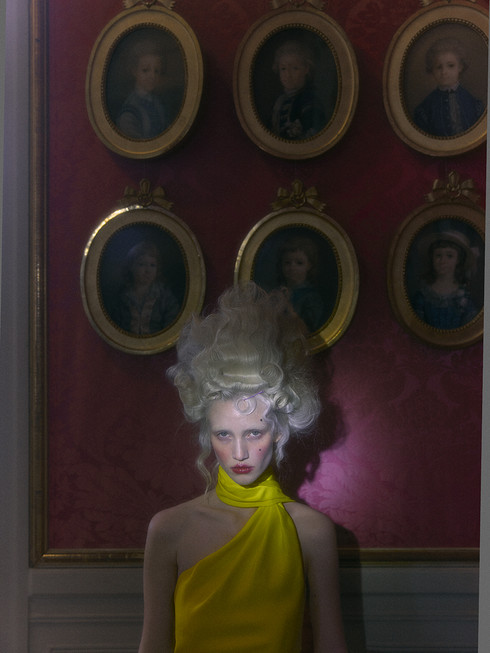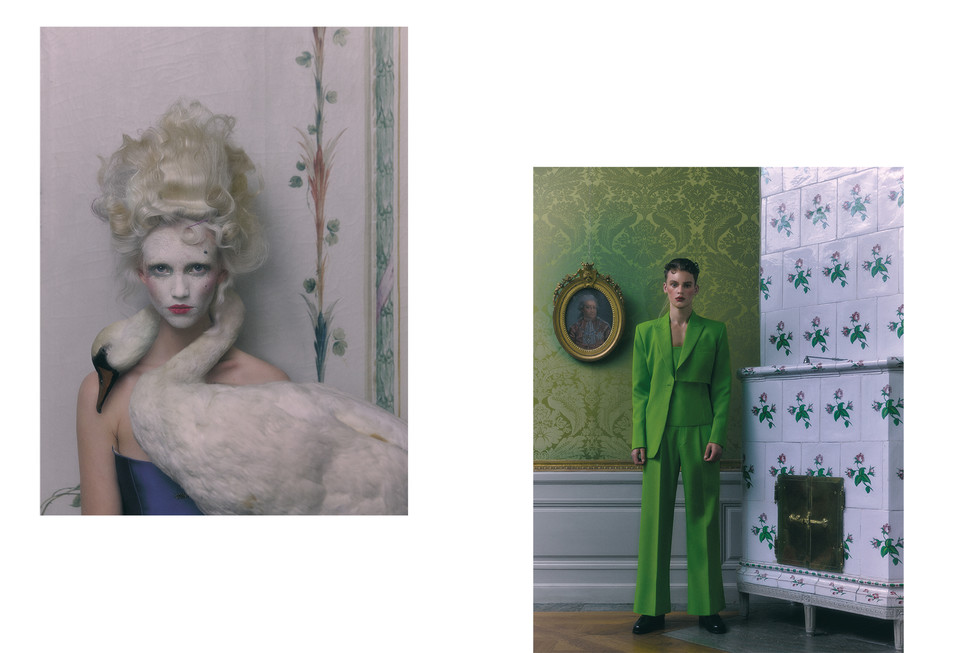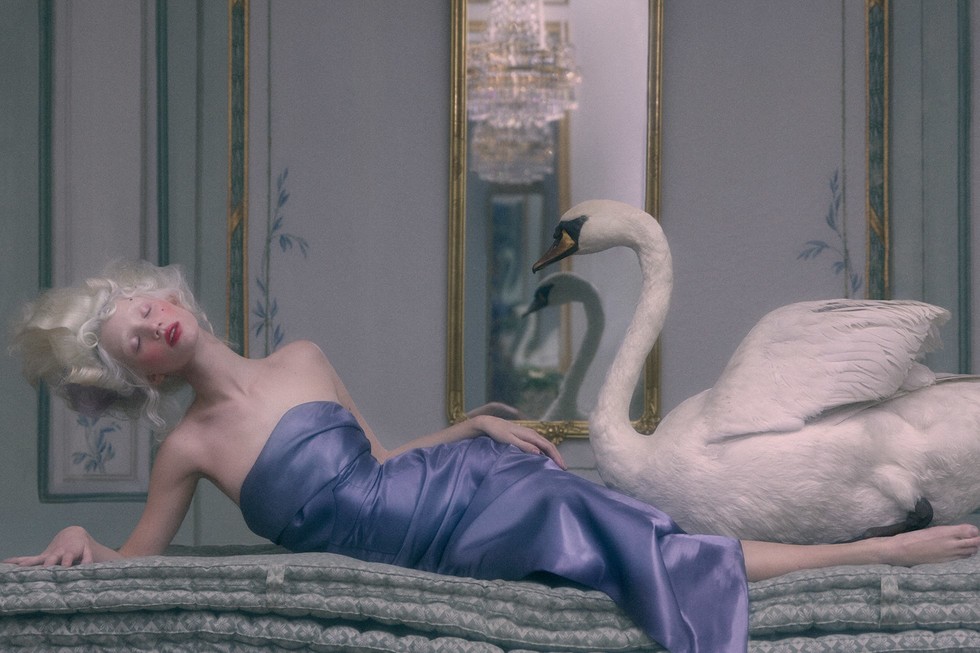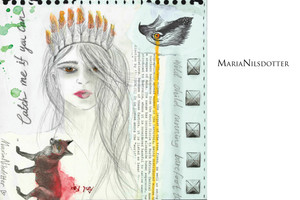White Cliffs of Dover
Written by Natalia Muntean by Zohra Vanlerberghe“I see clothing as structures for the body,” says Søren Le Schmidt, the Danish designer whose sharp, minimalist designs have graced red carpets, royal events, and even Tivoli’s candy-wrapper-clad mannequins. Known for his ability to blend old-school tailoring with futuristic flair, Schmidt is as much a storyteller as he is a designer. “I love breaking apart tradition and giving it a modern edge,” he admits, and it’s this fearless approach that has made him a standout in the fashion world. From dressing Queen Mary of Denmark to championing sustainability through upcycling and on-demand production, Schmidt’s work is a masterclass in balancing innovation with responsibility. In this interview, he reveals the inspiration behind his latest collection, his dream of designing for the Met Gala, and why, despite his glamorous career, he’s happiest at home with his family, sketching new ideas.
Natalia Muntean: What was the inspiration behind your latest collection, and how does it reflect your evolution as a designer? Are there any specific pieces or themes you’re particularly proud of?
Søren Le Schmidt: My latest collection is inspired by architecture and the structured design language I always work with. This time, I focused even more on contrasts: between tailoring and organic shapes, between the classic and the futuristic. I’m particularly proud of the new silhouettes, where I play with sharp lines while creating more movement in the garments.
NM: Your designs blend old-school tailoring with subcultural references and an edgy touch, while also drawing inspiration from architecture. How do you balance tradition, innovation, and architectural influences in your collections?
SLS: I’m trained as a tailor, so craftsmanship is my foundation. But I love challenging it and breaking it apart - that’s where my fascination with architecture comes in. I see clothing as structures for the body, and I work a lot with sharp, graphic lines. Innovation comes from taking the traditional and giving it a modern edge, like mixing classic suits with asymmetric cuts or unconventional materials.
NM: Your work emphasises gender fluidity and cultural diversity. How do you ensure your collections resonate with a wide audience while staying true to your vision?
SLS: For me, it’s not about designing for a specific gender but about creating clothing that makes people feel strong and allows them to express their identity. I focus on androgynous cuts and universal shapes that don’t dictate who should wear them. It’s important that my designs can be worn by anyone, regardless of gender, age, or background.
NM: Sustainability is a core focus for your brand. Can you share some challenges you’ve faced in sourcing 100% sustainable fabrics, and how does on-demand manufacturing help reduce waste? What advice would you give to emerging designers who want to prioritise sustainability?
SLS: Finding 100% sustainable materials that still have the quality and structure I want is a huge challenge. Many sustainable fabrics aren’t yet on the same level as traditional materials, but the industry is moving in the right direction. On-demand production means I only produce what is sold, eliminating overproduction. My advice to new designers: is to start by thinking about how to create less waste - smaller collections, fewer but better materials, and designs that stand the test of time.
NM: You’ve worked on projects like the Røde Kors “kaffebordsbog” to promote upcycling. How do you see the role of upcycling in the future of fashion, and how can it inspire broader industry change?
SLS: Upcycling is one of the most important solutions to fashion’s waste problem. I love taking old materials and giving them new life—it’s a way to create something unique while being responsible. If more brands start seeing leftover materials as a resource instead of waste, it could change how we produce fashion entirely.
NM: How do you decide which projects or collaborations to take on, and what makes a partnership successful for you?
SLS: For me, the most important thing is that a collaboration makes sense both aesthetically and value-wise. I only say yes to projects where I feel I can contribute something unique while also learning something new. A good partner shares my values of quality and sustainability but also gives me creative freedom.
NM: You’ve designed for royalty and red-carpet events. How do you approach creating pieces for such high-profile occasions while maintaining your signature style? What’s the most memorable design you’ve created, and what made it special?
SLS: When designing for royalty or red-carpet events, it’s all about finding the balance between elegance and edge. My most memorable design has to be the dress for Queen Mary. It was such an honour to dress such an iconic figure. I wanted to stay true to my minimalist design language while creating something timeless and majestic.
NM: How do you balance your roles as a designer, TV personality, and commentator? Do these roles influence each other, and how has your TV experience impacted your work in fashion?
SLS: TV has given me a platform to talk about fashion in a more accessible way. I like combining the creative and the communicative, so I don’t see my roles as separate but as part of a bigger storytelling about design and aesthetics.
NM: What was the transition from working for other brands to launching your own label in 2018?
SLS: It was incredibly exciting but also really tough. Running your own business means you have to think about everything—from design to production to finances. But it also gave me the freedom to create exactly the universe I wanted.
NM: If you weren’t a fashion designer, what career path do you think you would have pursued?
SLS: Definitely something creative—maybe architecture or graphic design. I’ve always been fascinated by shaping forms, whether it’s in clothing or buildings.
NM: What’s one thing people might be surprised to learn about you?
SLS: I’m actually quite introverted, even though I appear very outgoing in my work. I love being social, but I recharge when I’m alone with my wife and kids and can fully immerse myself in design.
NM: If you could design for any event or person in the world, what would it be and why?
SLS: The Met Gala would be a dream - it’s one of the few places where fashion is truly seen as art. I’d love to create something sculptural and futuristic, playing with proportions.
NM: What’s next for Søren Le Schmidt? Are there any new projects or collections you’re particularly excited about?
SLS: I’m working on a new show where I’m diving even deeper into craftsmanship. I also have some exciting collaborations coming up, but you’ll have to wait a little longer to hear more!

